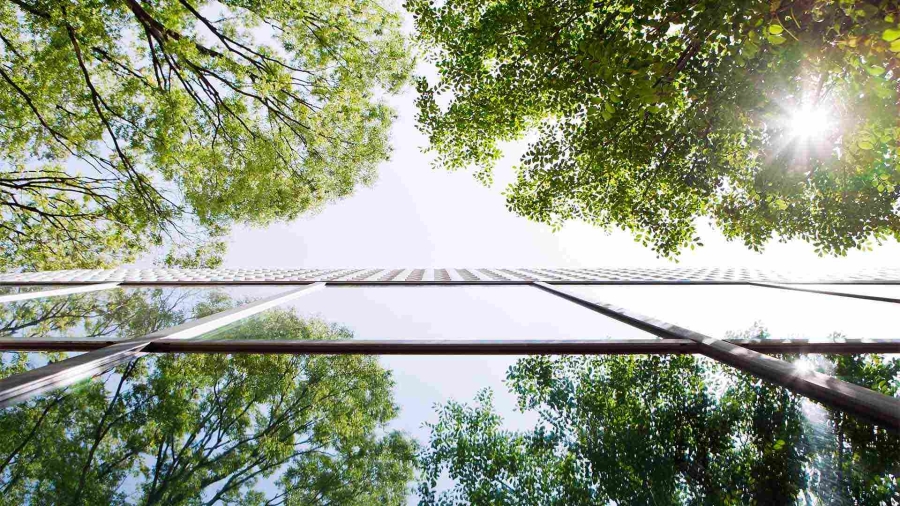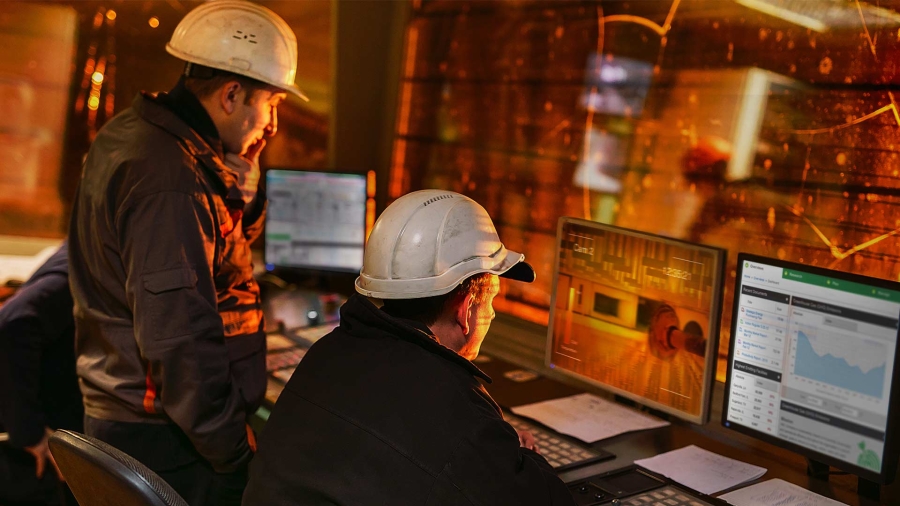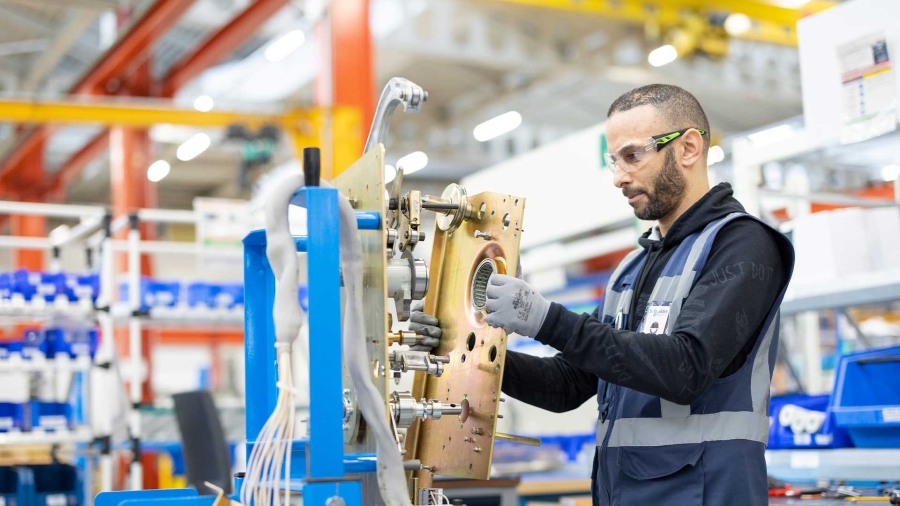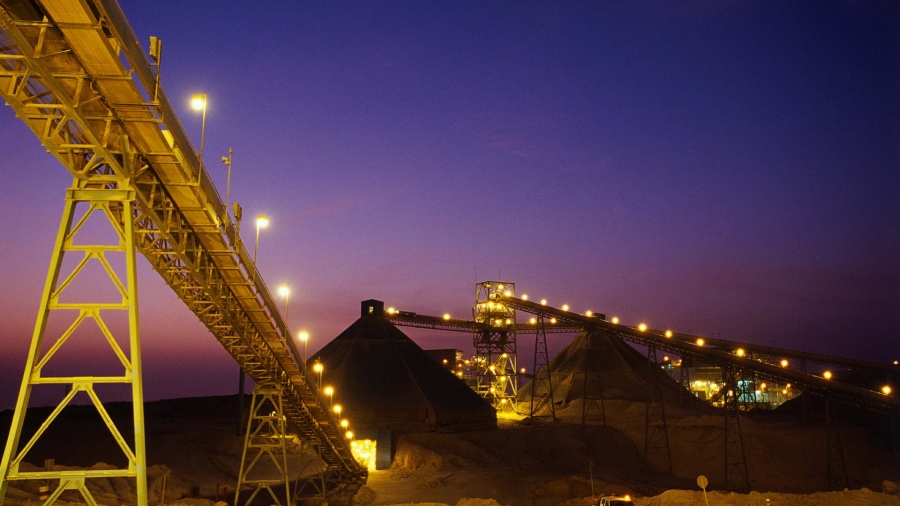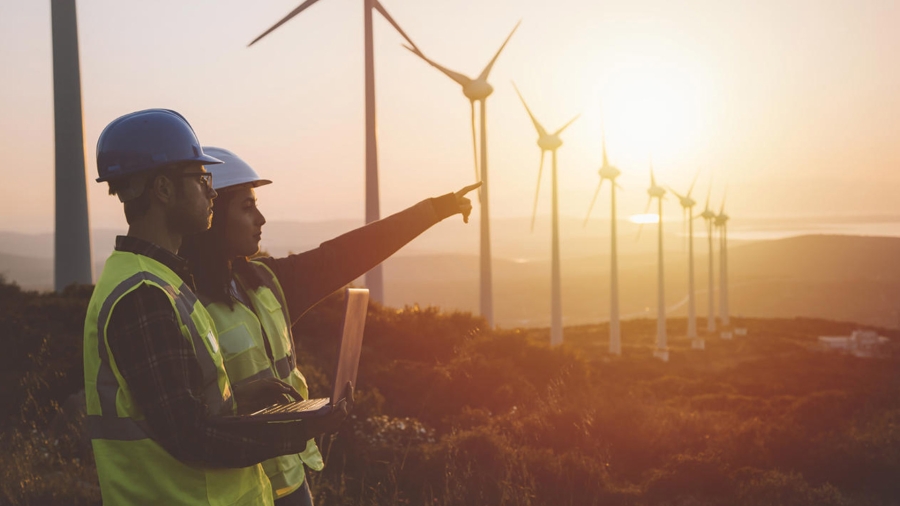Mikael Le Guern, Global Glass Business Development Manager, Eurotherm by Schneider Electric
The glass industry is expected to go through significant changes in order to meet the 2030 and 2050 decarbonization targets set by the Paris Agreement. Mikael Le Guern discusses how this transformation to ‘green’ glass can be achieved through electrification and digitalization of the glass making process.
The glass industry currently faces three main challenges to reach zero carbon manufacturing. The first is meeting decarbonization targets, driven by the Paris Agreement and other government- and company-set climate/energy zero carbon targets. Emissions reduction of NOx and SOx is also a key environmental driver. Secondly, the expected changes needed to achieve decarbonization will put pressure on CapEx and OpEx that could affect profitability and glass quality. As an energy-intensive industry where traditional technologies are poorly efficient, glass needs to remain competitive against other packaging materials such as aluminium and plastic. Finally, with consumers demanding rapid changes, this traditionally conservative industry will need to significantly accelerate its rate of change to adapt to the new reality, for example through electrification and digitalization of the process, with the agility to meet its customers’ sustainability goals.
In order to meet the carbon emission reductions, the industry needs to dramatically reduce its use of natural gas. In December 2020, the EU announced targets to reduce carbon emissions by 55% by 2030. By early September 2021, the European Union Allowance (EUA) carbon price in the EU Emissions Trading System (ETS) had reached around €60/tonne1. An 80% increase compared to early January 2021. The trend is likely to continue, with some projections estimating over €90/tonne by 2030 and beyond.
Obviously, this applies to Europe but the decarbonization challenge is valid everywhere. Including China which has created its own carbon trading market, initially covering the coal- and gas-fired power plants that account for ~40% of China’s carbon emissions. It is expected that China’s ETS, will extend to other sectors, including glass. Trading in China’s ETS began in July 2021 at a much lower price compared to Europe, at ~€6/tonne. According to the 2020 China Carbon Pricing Survey2, undertaken during July – August 2020, from hundreds of stakeholders, “Respondents expect carbon emissions trading to increasingly affect investment decisions in coming years. 37% of respondents expect investment decisions to be strongly or moderately affected in 2020. By 2025, this number rises to 69%.” China has pledged to bring its carbon emissions to a peak before 2030 and to reach carbon neutrality by around 20603. The US has also rejoined the Paris Agreement. This is a global movement. The market and consumers are demanding it.
Electrification makes sense
The majority of CO2 emissions in glass manufacturing (typically 75 to 85%) come from fuel combustion in the melting process. So replacing gas burners with electrical heaters is a very direct way to quickly achieve CO2 reduction. Other technologies are currently being assessed such as hydrogen and biogas. However, we believe that in terms of technology readiness and availability, electrical melting, including hybrid melting (using 50% to 90% electrical energy) is the solution that makes the most sense to address the decarbonization challenge for years to come.
Process electrification is the fastest way to reduce greenhouse gas emissions to meet the Paris Agreement and to achieve company commitments and pledges made via initiatives such as the RE100 or the Science Based Targets (SBTi). Therefore, it is anticipated that the number and size of electrical systems will need to increase to take over from traditional fossil fuels. The advantage of electrical melting is that it is already a proven and commonly used technology, suitable for scaling up to energize larger electrical melting systems.
Consider the entire process
The electrification of the process is not limited to the furnace itself. With electrical systems growing in size, it is important to have a holistic approach by including the complete power system and distribution architecture. For the best results, a complete vertical approach is needed, from the electrical grid to the glass. Combining power distribution systems with process automation and power systems architectures has the potential to optimize CO2 reduction as much as possible. This integration includes the high- and medium-voltage (HV and MV) distribution equipment, transformers, switchgears, VFD drives, etc. all the way to the melting and boosting power control system.
Traditionally, power systems for glass furnaces have been designed by engineering companies (EPCs) and/or mining end-users, who apply their industrial process knowledge and experience from previous projects. While this can result in robust installations, they are often not optimized for cost and footprint because the electrical design process focuses on individual parts of the system, rather than considering the system as a whole. Electrical equipment manufacturers are also not usually involved in the design phase, often only being consulted during the request for quotation process once the design has been decided.
A grid to glass approach
A combined approach is quite different, where, as part of the electrification, the complete power system can be further optimized in terms of cost and reliability through modeling and simulation with software that can optimize electricity power systems based on their digital twin equivalents. Through this type of end-to-end design, complex mission-critical power systems can be streamlined, and integration of renewables, microgrids, fuel cells, and battery storage technologies to the power grid can be improved and accelerated. A ‘grid to glass’ design approach can not only help to provide resilient power grids and decarbonized energy transport and generation. It can also lead to significant savings of up to 20% CapEx, by improving the design and performance.
For cost optimization in large electric systems, we also recommend installing all the equipment in a pre-fabricated electrical house (E-House); a factory-integrated, tested, validated, compact, power distribution solution. Both brownfield and greenfield sites can benefit from significant cost savings of up to 20% by reducing the civil engineering costs of traditional buildings for housing industrial equipment. Additional advantages are: lead-time reduction of up to 20%, and drastically reduced equipment start-up time and commissioning costs, resulting in shorter, less stressful rebuild campaigns.
For the melting and boosting processes, a preferred solution to deliver energy to the melt is through water-cooled power supply boxes that control one or two pairs of electrodes (typically from 100kVA to 1000MVA). The benefits are plentiful with a compact design that can be located very close to the furnace to reduce line current and heat losses, and eliminate expensive large busbars for smaller cables. A network of multiple power supply boxes provides flexibility to scale up and offers sufficient power redundancy to help enable continuous and reliable operation.
Digitalization for data driven performance
The next phase of electrification is digitalization. With all those assets deployed it becomes important to connect the devices. IoT-enabled power management architectures with connected devices are the perfect choice for intelligent distribution systems. Equipped with smart sensors and 24/7 connectivity, real-time data analytics support effective decision making. This can aid the safety of both people and equipment, improve equipment reliability through predictive maintenance, simplify asset management through digital features, and enhance network security. Connected equipment can include circuit breakers, power meters, power controllers, drives, MV/LV switchgears, and transformers, etc. The result can be significant asset utilization improvements, reduced maintenance costs, and reduction of unplanned downtime. From the shop floor to the global enterprise level, personnel can know what is happening and when, anytime, from anywhere.
A defense-in-depth cybersecurity approach
With more equipment connected, end-to-end cyber security is a must-have. Cybersecurity solutions and services must be robust across multiple operating environments including energy management (power distribution equipment) and industrial automation products and systems. Considerations should include, risk assessments, architecture based on a defense in depth approach, monitoring, software/operating system patching and more.
High-efficiency, integrated power and automation
The glass industry must make these shifts to be able to meet its sustainability goals by reducing greenhouse gas emissions in line with the Paris agreement while remaining profitable. The whole ecosystem has a part to play. Therefore, furnace OEMs, glass manufacturers and power and automation vendors must work together to achieve optimized sustainability and efficiency – from the grid to the glass.
[Footnotes]
1 https://ember-climate.org/data/carbon-price-viewer/
2 http://www.chinacarbon.info/sdm_downloads/2020-china-carbon-pricing-survey/
3 https://www.csis.org/analysis/chinas-new-national-carbon-trading-market-between-promise-and-pessimism
About the author:
Mikael Le Guern is Eurotherm Global Glass Business Development Manager
With a master’s degree in electrical engineering, Mikael started at Eurotherm Automation in Lyon, France in 2000 as a power application engineer, followed by a power product marketing position working with R&D on the EPower advanced SCR controller range. In 2007, Mikael transferred to the Eurotherm US office in Leesburg, VA, to become the North America power product manager, where he led the power control systems business. He joined the Eurotherm global business development team in 2018, with a focus on glass, power and process control. In his current role, Mikael and his international team of glass experts support world leading glass manufacturers in their transformation to sustainable production through digitalization and electrification of the process.
This piece was first published in Glass Worldwide in November 2021.
The glass industry is expected to go through significant changes in order to meet the 2030 and 2050 decarbonization targets set by the Paris Agreement. Mikael Le Guern discusses how this transformation to ‘green’ glass can be achieved through electrification and digitalization of the glass making process.
The glass industry currently faces three main challenges to reach zero carbon manufacturing. The first is meeting decarbonization targets, driven by the Paris Agreement and other government- and company-set climate/energy zero carbon targets. Emissions reduction of NOx and SOx is also a key environmental driver. Secondly, the expected changes needed to achieve decarbonization will put pressure on CapEx and OpEx that could affect profitability and glass quality. As an energy-intensive industry where traditional technologies are poorly efficient, glass needs to remain competitive against other packaging materials such as aluminium and plastic. Finally, with consumers demanding rapid changes, this traditionally conservative industry will need to significantly accelerate its rate of change to adapt to the new reality, for example through electrification and digitalization of the process, with the agility to meet its customers’ sustainability goals.
In order to meet the carbon emission reductions, the industry needs to dramatically reduce its use of natural gas. In December 2020, the EU announced targets to reduce carbon emissions by 55% by 2030. By early September 2021, the European Union Allowance (EUA) carbon price in the EU Emissions Trading System (ETS) had reached around €60/tonne1. An 80% increase compared to early January 2021. The trend is likely to continue, with some projections estimating over €90/tonne by 2030 and beyond.
Obviously, this applies to Europe but the decarbonization challenge is valid everywhere. Including China which has created its own carbon trading market, initially covering the coal- and gas-fired power plants that account for ~40% of China’s carbon emissions. It is expected that China’s ETS, will extend to other sectors, including glass. Trading in China’s ETS began in July 2021 at a much lower price compared to Europe, at ~€6/tonne. According to the 2020 China Carbon Pricing Survey2, undertaken during July – August 2020, from hundreds of stakeholders, “Respondents expect carbon emissions trading to increasingly affect investment decisions in coming years. 37% of respondents expect investment decisions to be strongly or moderately affected in 2020. By 2025, this number rises to 69%.” China has pledged to bring its carbon emissions to a peak before 2030 and to reach carbon neutrality by around 20603. The US has also rejoined the Paris Agreement. This is a global movement. The market and consumers are demanding it.
Electrification makes sense
The majority of CO2 emissions in glass manufacturing (typically 75 to 85%) come from fuel combustion in the melting process. So replacing gas burners with electrical heaters is a very direct way to quickly achieve CO2 reduction. Other technologies are currently being assessed such as hydrogen and biogas. However, we believe that in terms of technology readiness and availability, electrical melting, including hybrid melting (using 50% to 90% electrical energy) is the solution that makes the most sense to address the decarbonization challenge for years to come.
Process electrification is the fastest way to reduce greenhouse gas emissions to meet the Paris Agreement and to achieve company commitments and pledges made via initiatives such as the RE100 or the Science Based Targets (SBTi). Therefore, it is anticipated that the number and size of electrical systems will need to increase to take over from traditional fossil fuels. The advantage of electrical melting is that it is already a proven and commonly used technology, suitable for scaling up to energize larger electrical melting systems.
Consider the entire process
The electrification of the process is not limited to the furnace itself. With electrical systems growing in size, it is important to have a holistic approach by including the complete power system and distribution architecture. For the best results, a complete vertical approach is needed, from the electrical grid to the glass. Combining power distribution systems with process automation and power systems architectures has the potential to optimize CO2 reduction as much as possible. This integration includes the high- and medium-voltage (HV and MV) distribution equipment, transformers, switchgears, VFD drives, etc. all the way to the melting and boosting power control system.
Traditionally, power systems for glass furnaces have been designed by engineering companies (EPCs) and/or mining end-users, who apply their industrial process knowledge and experience from previous projects. While this can result in robust installations, they are often not optimized for cost and footprint because the electrical design process focuses on individual parts of the system, rather than considering the system as a whole. Electrical equipment manufacturers are also not usually involved in the design phase, often only being consulted during the request for quotation process once the design has been decided.
A grid to glass approach
A combined approach is quite different, where, as part of the electrification, the complete power system can be further optimized in terms of cost and reliability through modeling and simulation with software that can optimize electricity power systems based on their digital twin equivalents. Through this type of end-to-end design, complex mission-critical power systems can be streamlined, and integration of renewables, microgrids, fuel cells, and battery storage technologies to the power grid can be improved and accelerated. A ‘grid to glass’ design approach can not only help to provide resilient power grids and decarbonized energy transport and generation. It can also lead to significant savings of up to 20% CapEx, by improving the design and performance.
For cost optimization in large electric systems, we also recommend installing all the equipment in a pre-fabricated electrical house (E-House); a factory-integrated, tested, validated, compact, power distribution solution. Both brownfield and greenfield sites can benefit from significant cost savings of up to 20% by reducing the civil engineering costs of traditional buildings for housing industrial equipment. Additional advantages are: lead-time reduction of up to 20%, and drastically reduced equipment start-up time and commissioning costs, resulting in shorter, less stressful rebuild campaigns.
For the melting and boosting processes, a preferred solution to deliver energy to the melt is through water-cooled power supply boxes that control one or two pairs of electrodes (typically from 100kVA to 1000MVA). The benefits are plentiful with a compact design that can be located very close to the furnace to reduce line current and heat losses, and eliminate expensive large busbars for smaller cables. A network of multiple power supply boxes provides flexibility to scale up and offers sufficient power redundancy to help enable continuous and reliable operation.
Digitalization for data driven performance
The next phase of electrification is digitalization. With all those assets deployed it becomes important to connect the devices. IoT-enabled power management architectures with connected devices are the perfect choice for intelligent distribution systems. Equipped with smart sensors and 24/7 connectivity, real-time data analytics support effective decision making. This can aid the safety of both people and equipment, improve equipment reliability through predictive maintenance, simplify asset management through digital features, and enhance network security. Connected equipment can include circuit breakers, power meters, power controllers, drives, MV/LV switchgears, and transformers, etc. The result can be significant asset utilization improvements, reduced maintenance costs, and reduction of unplanned downtime. From the shop floor to the global enterprise level, personnel can know what is happening and when, anytime, from anywhere.
A defense-in-depth cybersecurity approach
With more equipment connected, end-to-end cyber security is a must-have. Cybersecurity solutions and services must be robust across multiple operating environments including energy management (power distribution equipment) and industrial automation products and systems. Considerations should include, risk assessments, architecture based on a defense in depth approach, monitoring, software/operating system patching and more.
High-efficiency, integrated power and automation
The glass industry must make these shifts to be able to meet its sustainability goals by reducing greenhouse gas emissions in line with the Paris agreement while remaining profitable. The whole ecosystem has a part to play. Therefore, furnace OEMs, glass manufacturers and power and automation vendors must work together to achieve optimized sustainability and efficiency – from the grid to the glass.
[Footnotes]
1 https://ember-climate.org/data/carbon-price-viewer/
2 http://www.chinacarbon.info/sdm_downloads/2020-china-carbon-pricing-survey/
3 https://www.csis.org/analysis/chinas-new-national-carbon-trading-market-between-promise-and-pessimism
About the author:
Mikael Le Guern is Eurotherm Global Glass Business Development Manager
With a master’s degree in electrical engineering, Mikael started at Eurotherm Automation in Lyon, France in 2000 as a power application engineer, followed by a power product marketing position working with R&D on the EPower advanced SCR controller range. In 2007, Mikael transferred to the Eurotherm US office in Leesburg, VA, to become the North America power product manager, where he led the power control systems business. He joined the Eurotherm global business development team in 2018, with a focus on glass, power and process control. In his current role, Mikael and his international team of glass experts support world leading glass manufacturers in their transformation to sustainable production through digitalization and electrification of the process.
This piece was first published in Glass Worldwide in November 2021.


